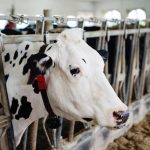
New Zealand farmers are not alone in facing the challenge of striving for value while mitigating their environmental footprint. Senior reporter Richard Rennie is in Australia to find out how our neighbours are approaching the issues of gene technology, carbon farming and sustainability.
A senior Australian livestock researcher has cautioned that plenty of hurdles remain to be cleared before methane mitigators can provide even part of the solution to greenhouse gas emissions, with New Zealand and Australia sharing many of those challenges.
Dr Chris McSweeney, chief research scientist at Australia’s CSIRO in Brisbane, said as appealing as methane mitigators are as a solution to dealing with livestock emissions, the devil is deep in the detail in terms of how countries such as NZ and Australia will deliver them to their free-range livestock.
McSweeney has a long career focused on ruminant production, with expertise in many aspects of Queensland’s extensive beef production systems.
He welcomes the efforts made to date to develop mitigators, including DSM’s Bovaer and Australia’s own Asparagopsis red seaweed discovery.
He said he is particularly impressed with the efforts DSM has taken to ensure Bovaer’s efficacy, albeit in a feedlot situation to date, and the scientific transparency behind the product’s targeted, specific action.
Trial indications are that Bovaer can reduce methane emissions by 40-50% in feedlot cattle.
But he remains cautious about Asparagopsis and its active ingredient bromoform, still subject to deeper scrutiny in terms of bromoform’s residue and longer term implications for sustained feeding.
In NZ, Fonterra is trialling Kowbucha, including feeding it to young non-lactating dairy calves to study whether the potential rumen modification it could deliver will remain when they start lactating.
He noted earlier work has also been done on this practice with other products, with mixed success.
“There is a notion you can intervene early in life to change the rumen microbiology and methane production long term, but this is somewhat questionable.”
As convinced as he is by the extensive development and trialling DSM has undertaken with Bovaer and its active’s very targeted behaviour, he maintains the good science behind it represents only half the job.
“It will work, it is just how do you feed it to pastoral animals regularly?
“There is also a lot of work to be done for regulators to accept a product, in terms of trial work across regions and species, and once you have something that works, it has to be done a few times across generations.”
He suspects any mitigation compound will require some sort of accreditation system that also allows for the fact that lab or small trial results don’t reflect the reductions achieved in the reality of a commercial farm system.
“And of course regulators need to be assured it has actually been purchased and administered, and not just poured down the creek somewhere.”
He said the farming sector is rightly highly fixated on how these aspects will be managed.
In an extensive pastoral system, the sheer practicalities of application are also apparent.
“You have the issue of breeding herds, for example. The biggest emissions are coming from breeding herds, they graze on the poorer country and are on farm for longer periods.
“If they are empty, then all they have done is produce methane, with nothing to show for it.”
For that reason, he sees Australia’s beef herd management system, overseen by the Clean Energy Regulator, as a practical approach to dealing with sector emission reductions.
It sets the rules for crediting emissions reductions achieved in pastoral beef herds.
Reductions in methane are largely achieved through improvements in methane efficiency. For beef cattle emissions, intensity is measured through tonnes of GHG produced per tonne of beef.
“So, the introduction of supplements, a culling programme, genetics, improved pastures, improvements in calf rates, they all contribute to incremental improvements in that figure and those gains can be claimed as carbon credit units.
“On grounds of improved productivity, it is a good project.”
He said larger pastoral companies in particular focus on this scheme, on grounds that failing to do so will see banks and venture capital investors shy away from investment.
However, he also acknowledged such a scheme will see properties plateau in terms of what they can achieve.
You can now read the most important #news on #eDairyNews #Whatsapp channels!!!
🇺🇸 eDairy News INGLÊS: https://whatsapp.com/channel/0029VaKsjzGDTkJyIN6hcP1K
























